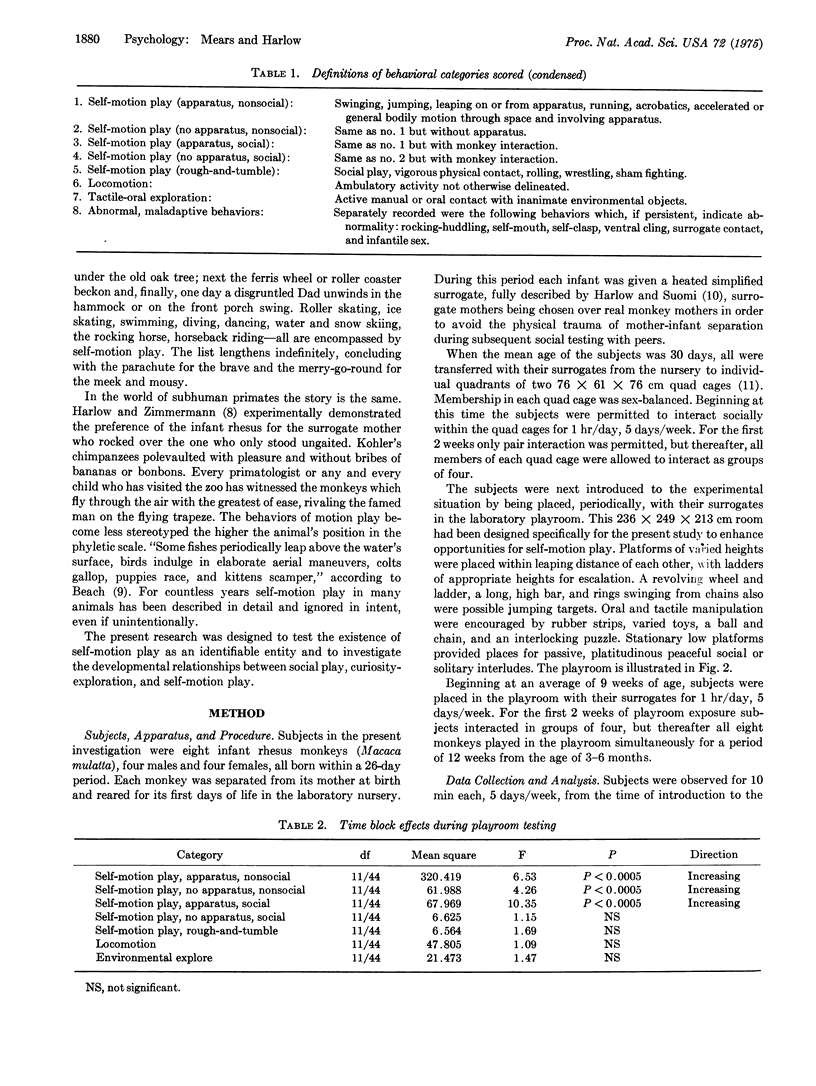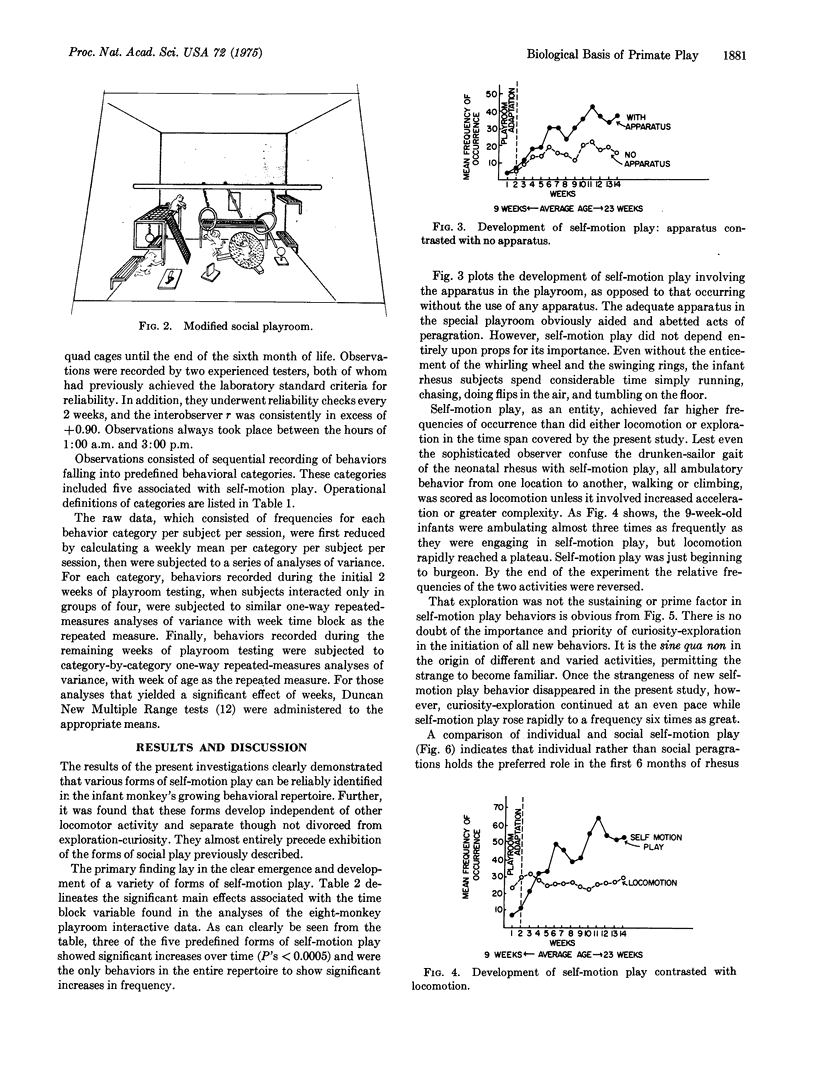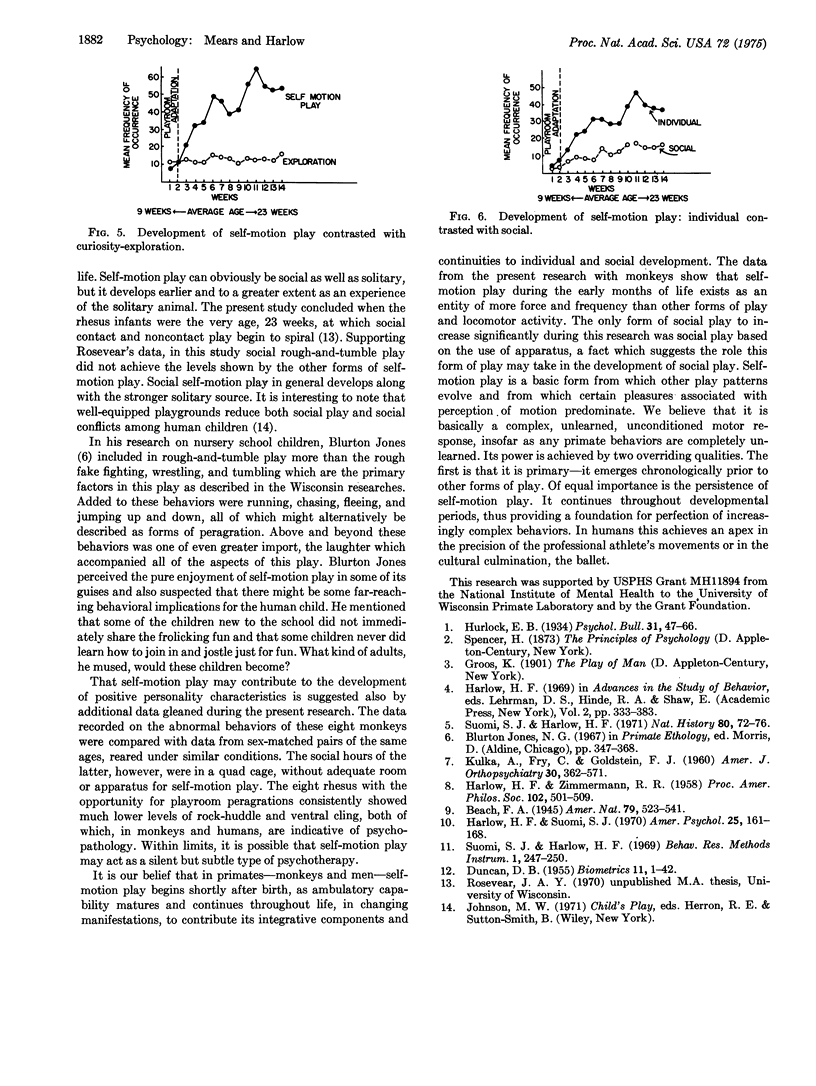Abstract
A systematic 12-week investigation of development of play behavior was conducted with eight socially reared rhesus monkey infants. A new, basic and primary play form termed self-motion play or peragration was identified and examined. This behavior follows a human model which includes a wide range of pleasurable activities involving motion of the body through space, e.g., rocking, swinging, running, leaping, and water or snow skiing. It can be argued that self-motion play is the initial primate play form and because of its persistence constitutes a reinforcing agent for maintaining many complex patterns and even pastimes. Monkey self-motion play in the present study was divided into five separate patterns in order to compare the relative importance of social and individual peragration play, the role of apparatus and the overall developmental relationships between the different individual and social self-motion play patterns. The data showed that from 90 to 180 days of age self-motion play was independent of other forms of play, that individual self-motion play appeared earlier and with significantly greater increases in frequency than did social self-motion play, and that apparatus was a necessary component for significant increases in social self-motion play. Other findings were that self-motion play existed independent of locomotion and, though initiated by exploration, was separate from it. Therapeutic implications of self-motion play were discussed.
Full text
PDF




Images in this article
Selected References
These references are in PubMed. This may not be the complete list of references from this article.
- Harlow H. F., Suomi S. J. Nature of love--simplified. Am Psychol. 1970 Feb;25(2):161–168. doi: 10.1037/h0029383. [DOI] [PubMed] [Google Scholar]
- KULKA A., FRY C., GOLDSTEIN F. J. Kinesthetic needs in infancy. Am J Orthopsychiatry. 1960 Jul;30:562–571. doi: 10.1111/j.1939-0025.1960.tb02071.x. [DOI] [PubMed] [Google Scholar]







